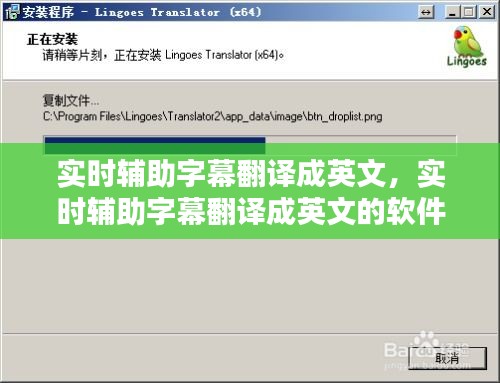Introduction to Real-Time Subtitle Translation
In today's globalized world, where communication transcends geographical boundaries, the need for real-time subtitle translation has become increasingly significant. Real-time subtitle translation refers to the process of converting spoken language into written text in real-time, allowing individuals to understand and follow conversations or presentations in languages they are not fluent in. This technology has found its way into various platforms, from live events to online streaming services, and has revolutionized the way we consume content.
How Real-Time Subtitle Translation Works
Real-time subtitle translation involves several key components that work together to provide an accurate and seamless translation experience. The process typically includes the following steps:
Audio Input: The first step is to capture the audio from the source language. This can be done through a microphone or any other audio input device.
Speech Recognition: The audio is then processed by a speech recognition engine that converts the spoken words into a digital format. This engine must be capable of understanding and transcribing the source language accurately.
Translation Engine: Once the audio is transcribed, it is sent to a translation engine that converts the text into the target language. This engine uses advanced algorithms and machine learning techniques to ensure the accuracy of the translation.
Text-to-Speech (TTS): In some cases, the translated text is converted back into speech using a Text-to-Speech engine. This is particularly useful when the translated text needs to be spoken aloud, such as in live events or presentations.
Display: Finally, the translated text is displayed on the screen as subtitles, allowing viewers to read and understand the content in real-time.
Advantages of Real-Time Subtitle Translation
Real-time subtitle translation offers several advantages that make it a valuable tool for both individuals and organizations:
Accessibility: It provides a means for individuals with hearing impairments or those who are deaf to access and understand audio content.
Language Learning: It can be a powerful tool for language learners, allowing them to practice listening and speaking skills in a real-world context.
Global Communication: It facilitates communication between people of different linguistic backgrounds, breaking down language barriers and promoting global understanding.
Business Opportunities: For organizations, real-time subtitle translation can open up new markets and opportunities by making content accessible to a wider audience.
Live Events: It enhances the experience of live events, such as conferences, lectures, and performances, by providing real-time translations for attendees who do not speak the host language.
Challenges and Limitations
While real-time subtitle translation has come a long way, it still faces certain challenges and limitations:
Accuracy: Although speech recognition and translation engines have improved significantly, they are not always 100% accurate, especially with complex or colloquial language.
Latency: There can be a delay between the spoken words and the appearance of the subtitles, which can be frustrating for viewers.
Language Support: Not all languages are supported equally well, and some may lack the necessary resources for accurate translation.
Cost: High-quality real-time subtitle translation services can be expensive, which may limit their accessibility for some users.
The Future of Real-Time Subtitle Translation
As technology continues to advance, the future of real-time subtitle translation looks promising. Here are some potential developments:
Improved Accuracy: With ongoing research and development, speech recognition and translation engines are expected to become even more accurate, reducing errors and improving the overall quality of translations.
Reduced Latency: Advances in processing power and network technology may lead to faster translation times, minimizing latency and enhancing the viewer experience.
Increased Language Support: As more resources are invested in language technology, the number of supported languages is likely to grow
转载请注明来自江苏安盛达压力容器有限公司,本文标题:《实时辅助字幕翻译成英文,实时辅助字幕翻译成英文的软件 》
















 苏ICP备2020065159号-1
苏ICP备2020065159号-1